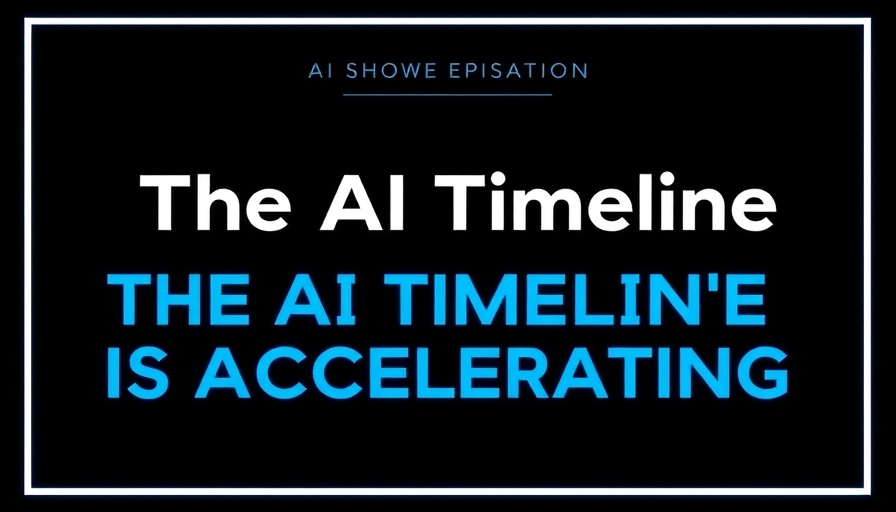
Accelerating Towards Artificial General Intelligence
The future of Artificial Intelligence (AI) is no longer a distant dream; it's rapidly becoming a reality. As highlighted in the latest episode of The AI Show, the road to Artificial General Intelligence (AGI) is rumored to be arriving sooner than many anticipated. Host Paul Roetzer suggests that advancements in AI may converge within a few years, posing challenges and opportunities that leaders must prepare for.
What Defines AGI?
AGI represents not just a leap in technology but also a redefinition of intelligence itself. The show discusses the varying interpretations of AGI, illustrating that it is still a moving target. This evolving understanding is crucial for businesses and leaders who need to align their strategies with the changing landscape of AI technology.
Predictions for the Next Five Years
The timeline for AI advancements is ambitious. By 2025, we may observe significant breakthroughs in Large Language Models (LLMs) and a surge in multimodal AI capabilities. This means not only can AI understand language and text but also seamlessly integrate different formats such as images and sounds. Furthermore, by 2025 to 2027, the rise of AI agents could revolutionize industries by automating complex problem-solving tasks.
Implications for Businesses and Society
As we edge closer to AGI and witness its ripple effects, the implications for organizations are profound. Companies must evaluate their existing AI strategies and enhance their readiness for a future where machines may outperform humans in decision-making processes. The transition requires thoughtful planning and responsible implementation to ensure that AI remains a tool for societal benefit.
In a world where AI capabilities are accelerating, leaders must act now. Understanding the trajectory of AI and its potential impact on their businesses will foster a proactive approach, ensuring they are not only consumers of AI but also contributors to its development. Knowledge is power, and the sooner individuals and organizations embrace this transformative technology, the better positioned they will be for future success.
 Add Row
Add Row  Add Element
Add Element 



Write A Comment